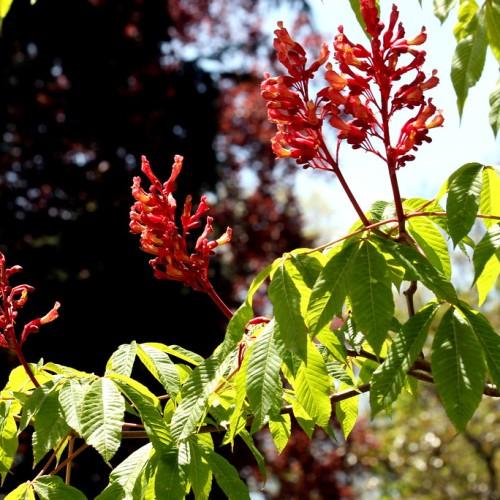
buckeye
Aesculus woerlitzensis
Cycle:
Perennial
Watering:
Frequent
Hardiness Zone:
5 - 8
Flowers:
Flowers
Sun:
full sun,part shade
Fruits:
Fruits Ready In Fall
Edible:
Yes
Leaf:
Yes
Growth Rate:
Low
Maintenance:
Low
Drought Tolerant:
Yes
Salt Tolerant:
Yes
Care Level:
Medium
watering
Buckeyes (Aesculus woerlitzensis) should be watered every 3-4 days during the growing season (spring and summer) with approximately 1 inch of water delivered either through irrigation or hand-watering. During colder months, buckeyes require much less water. During the winter months, water the buckeye every 14-21 days, depending on the weather and the amount of rainfall. Relatively moist soil should be maintained but not overly soaked.
sunlight
Buckeye plants need full sun for the best growth and bloom. They should be planted in an area that receives at least 6 to 8 hours of direct sunlight during the summer months. During the winter months, the sunlight requirement will diminish to at least 4 to 5 hours a day, so make sure they get plenty of sun during the warmer months in order for them to flourish.
pruning
Pruning of Aesculus woerlitzensis (Buckeye) should be done in late winter or early spring, during late February or early March. The amount of pruning should be kept to a minimum - no more than 1-third of the plant should be removed at any given time. Additionally, any dead or diseased branches should be cut away and removed completely. This can help to ensure that the plant stays healthy and retains its shape and form.
